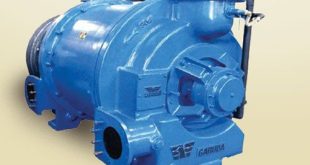I have been pulling a vacuum on my system using a micron gauge and cannot get it down to a low reading
When pulling a vacuum on an HVAC system, the primary goal is to remove air and moisture from the refrigerant lines, which can negatively impact system performance and potentially damage components. Properly pulling a vacuum ensures efficient heat transfer, prevents corrosion, and protects the compressor. This process is typically performed using a vacuum pump, micron gauge, and appropriate hoses and fittings.
Here’s a more detailed breakdown:
Why pull a vacuum?
- Moisture Removal:Moisture in the refrigerant lines can lead to acid formation, which corrodes system components and reduces efficiency.
- Air Removal:Air in the system can act as a non-condensable gas, hindering the refrigerant’s ability to transfer heat effectively and potentially damaging the compressor.
- Leak Detection:A properly pulled vacuum can also help identify leaks in the system, as a drop in vacuum pressure indicates a leak.
How to pull a vacuum:
- ۱٫ Connect the Equipment:Attach a vacuum pump to the system using appropriate hoses and fittings, ensuring all connections are tight and leak-free.
- ۲٫ Use a Micron Gauge:A micron gauge measures the vacuum level, and it’s crucial to monitor this throughout the process.
- ۳٫ Start the Vacuum Pump:Begin pulling a vacuum, and monitor the micron gauge to ensure the pressure is dropping.
- ۴٫ Achieve the Target Vacuum:The target vacuum level will depend on the specific system and refrigerant, but typically a deep vacuum (e.g., below 500 microns) is desired.
- ۵٫ Hold the Vacuum:Once the target vacuum is reached, shut off the pump and observe the micron gauge for any rise in pressure. A stable vacuum indicates a properly sealed system.
- ۶٫ Break the Vacuum (If Necessary):If the system is not holding the vacuum, you may need to break the vacuum with nitrogen to identify and repair leaks.
Important Considerations:
- Safety:Always follow manufacturer’s instructions and safety guidelines when working with HVAC systems and vacuum pumps.
- Professional Help:Pulling a vacuum on an HVAC system can be complex, and it’s often best left to qualified HVAC professionals.
- Moisture:If the system has a significant amount of moisture, it may be necessary to use a refrigerant dryer or other methods to remove it before pulling a vacuum.
See FAQ #1. Another possibility is that some oil may have entered the micron gauge and is giving false readings. The remedy is to pour regular rubbing alcohol into the connector on the micron gauge, shake, and pour out (do not use a q-tip, rag, or any other material – use the liquid alcohol only). Do this about three times, then try to pull a vacuum with the gauge.
